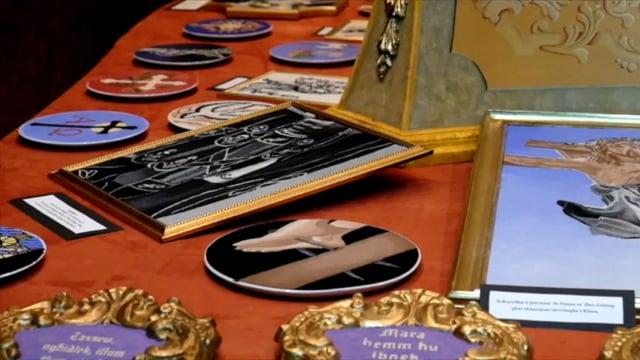[WATCH] Band clubs in Haz-Zebbug set up impressive exhibitions for Good Friday
St. Philip's band club and the 12th May band club exhibit impressive pieces for Good Friday





Two of the band clubs in Haz-Zebbug have set up varied exhibitions in occasion of Good Friday and Easter this weekend, with the 12th May band club proudly exhibting an extensive collection of rice and semolina art works while St. Philip’s band club exhibited a large collection of both live-size statues and smaller figurines.
12th May band club committee member Steve Caruana said that the semolina and rice paintings typical of this period are all labours of love.
“The pieces exhibited here have been created by the young members of the band club, under the direction of more experienced members, but it was not done for financial reasons or by professional artists,” Caruana said.

Caruana explained that the works had to be made during the colder months of the year as semolina starts rotting quickly particularly in the warmer months.
“The pieces are then stored in special cupboards to ensure that they are not moved about and that dust does not ruin the patterns,” Caruana said.
Caruana also pointed out that both the rice and semolina paintings originally started with a layer of white semolina, where a sketch of the final artwork would be drawn using special tools.

“The semolina is then coloured in various hues and the actual placing of the grains begins. In rice paintings, the same process is followed, but the coloured rice is then placed on top of the upper, coloured semolina layer, to make sure that any spaces between the rice grains does not present white gaps,” Caruana said.
Caruana said that both styles require different techniques, and that the pieces would be disposed of by tomorrow.
“Semolina requires more different shades and colours, and it can also be more difficult since the small grains can easily move. Rice is better to handle because you can actually hold the individual grains, but it also requires more precision in the way the grains are placed.”
Further down the road, the St. Philip’s band club exhibited a large collection of both live-size statues and smaller figurines. The impressive life-size statues showed various scenes in the passion, including the Golgotha crucifixion scene, and the grotto scene displayed in a former World War II shelter.
Exhibitor Jonathan Agius explained that commissioning such works had been a passion of his as far back as he could remember, with relatives buying him small clay figurines for his birthday, which always fell close to Lent. The first time he exhibited works at the band club was in 2003, and Agius explained that all the works were personally paid by him.
“The small chalk figurines are all 18 inches long and the set is made up of 18 different statues made by artist Antoine Magri from Zebbug,” Agius said.
Agius explained that the process of creating these figurines was a very long one, with the artist first having to make them out of clay and then covering them with chalk.
“Every figurine probably takes around two to three months to be completed,” Agius said, adding that the exhibition would be open until 10pm today.






.jpg)













.png)


